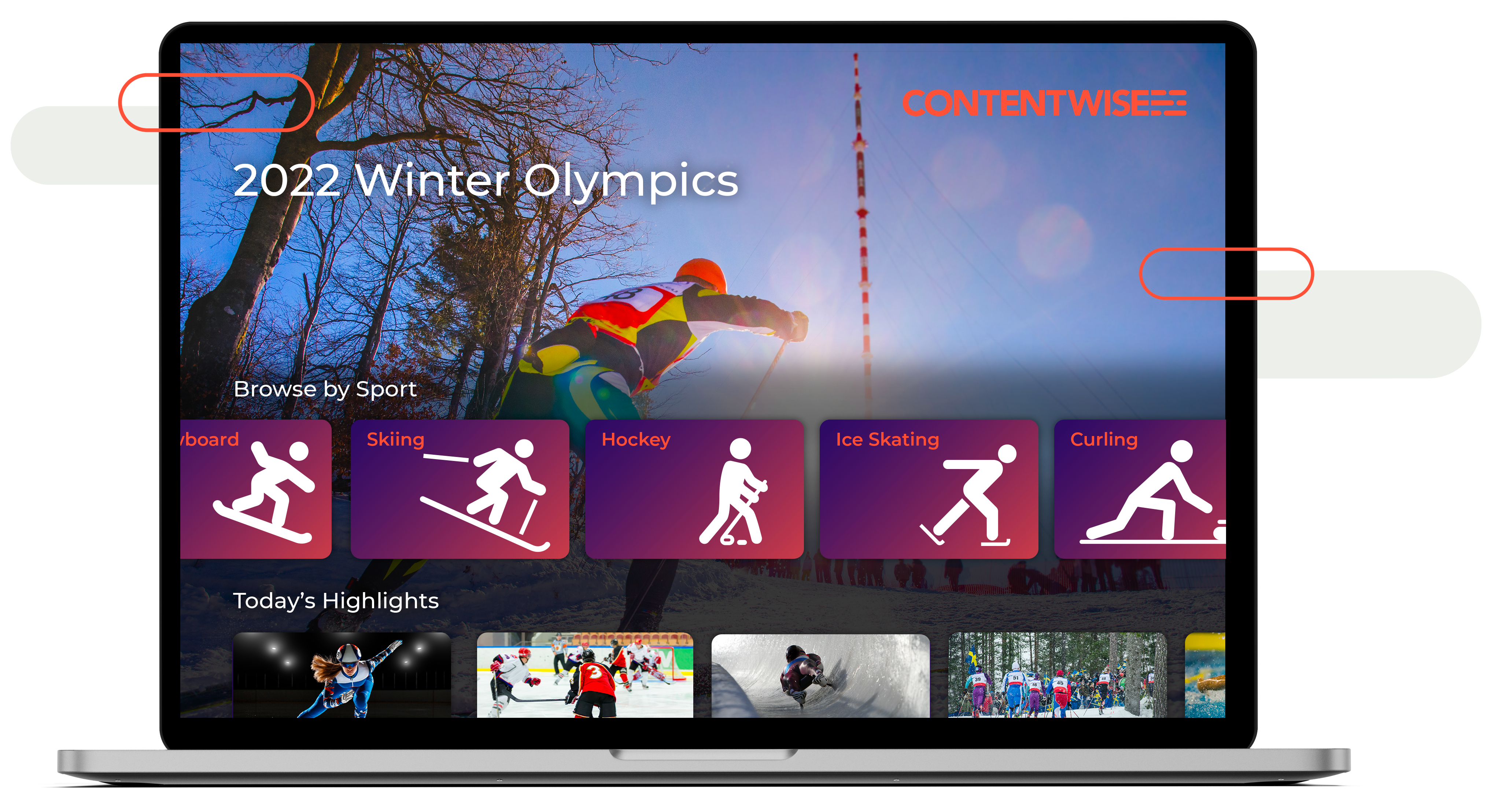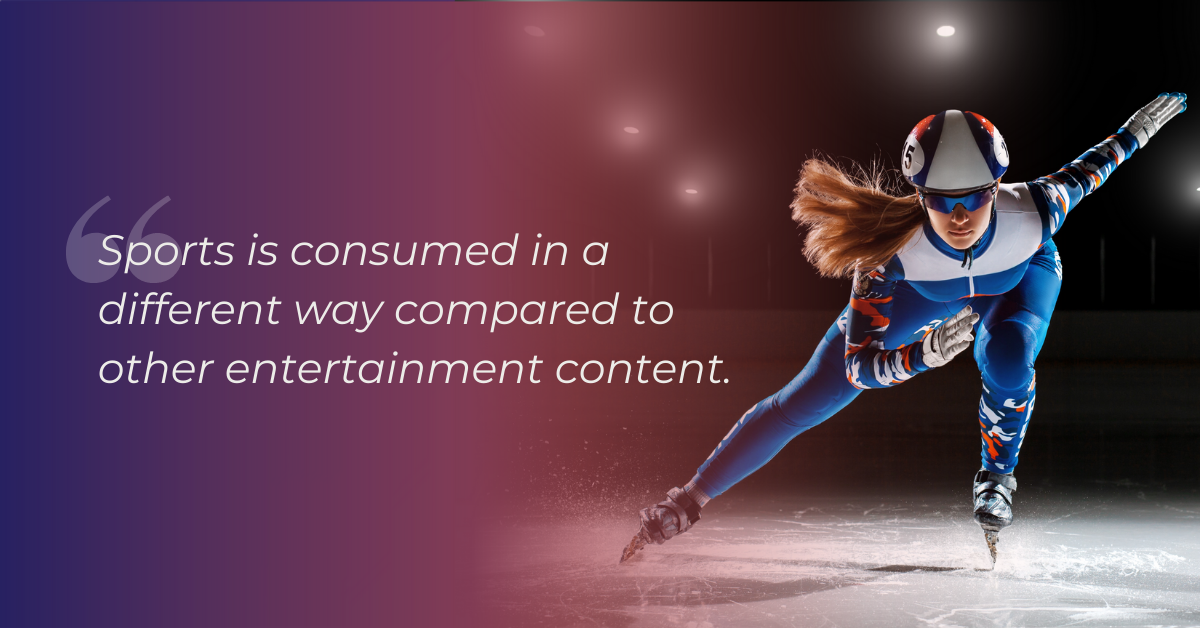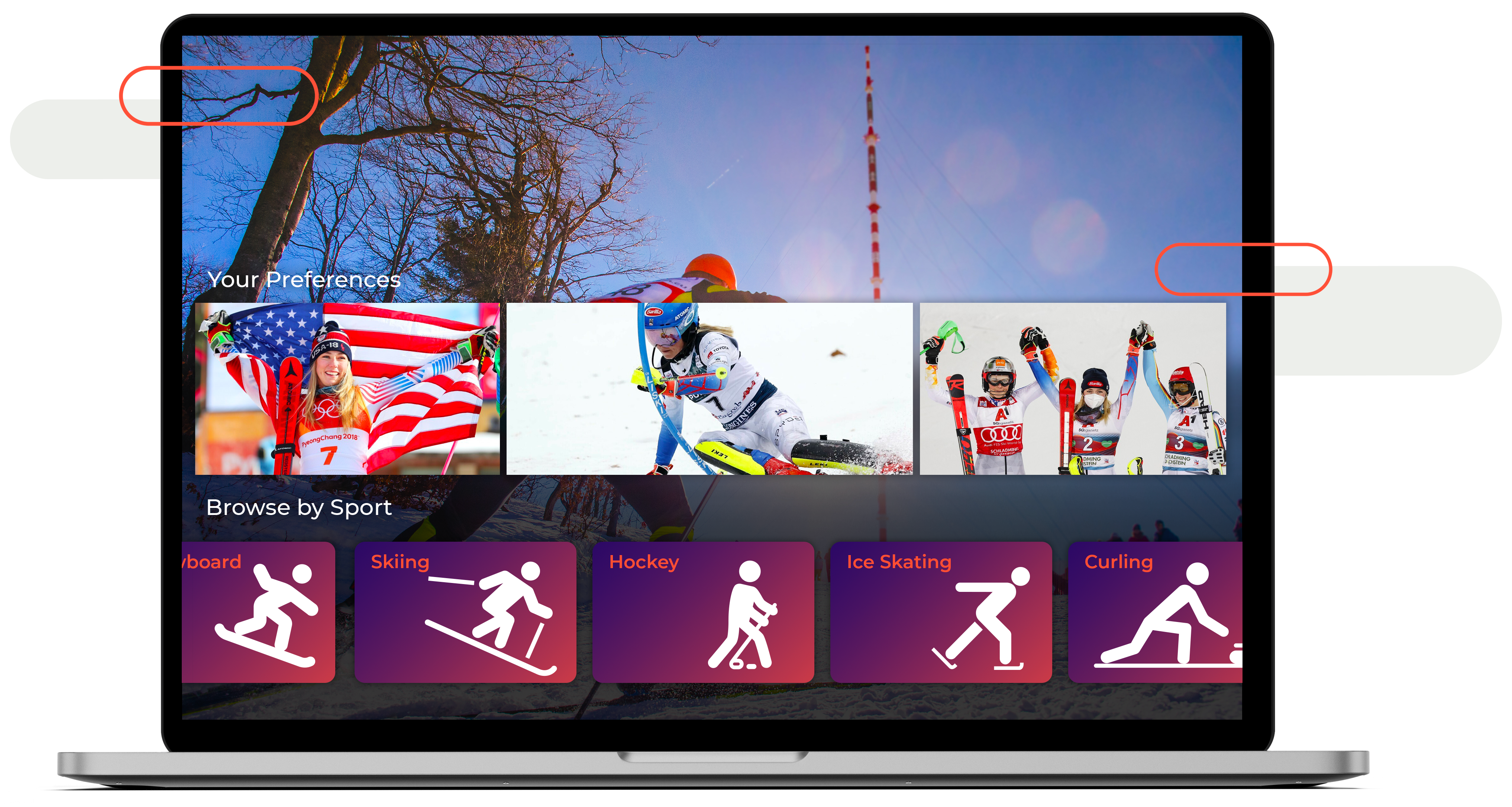
Articles
3 video use cases to improve the Winter Olympics UX
You are here:
How to increase viewer engagement and get a positive ROI on sports investments rights.
One of history’s most controversial Winter Olympics games is about to start in Beijing, China. Roughly 2,800 athletes from all over the world will get the chance to compete to become Olympic champions.
Despite the surge of the Omicron variant, Xi’an residents’ lockdown enforced by the Chinese Government, and the organizing committee’s controversial stance on “speech that is against the Olympic spirit”, the opening ceremony is set to start on February 4th at the Bird’s Nest stadium in Beijing.
The summer Olympics represented a must-watch appointment for sports enthusiasts, casual fans, and broadcasters, also thanks to the transition from linear to on-demand content. With savvy consumers’ habits quickly evolving, streaming platforms must accommodate users’ ever-changing tastes, while managing the complexity of broadcasting and curating multiple channels and a flood of sports content.
The user experience (UX), as we analyzed immediately after the 2020 Tokyo Olympic Games, is still falling short in terms of customer expectations. But what can operators do to provide better and more coherent content in front of their viewers?
Of course, this question is quite complex. There are a lot of specifics that come into place, as well as different operators’ business strategies and objectives.

However, in this article, we want to provide three video use cases that can make the sports fan’s Winter Olympic Games experience more fulfilling.
The 3 video use cases
1. Preferences
What is it?
Preferences – explicit and implicit – allow operators to understand users’ tastes.
Explicit preferences are stated intentionally by users in response to prompts about their favorite teams or athletes. Usually, they are collected during the onboarding phase, when a user joins the platform for the first time – the so-called cold start – but also at later stages of the customer journey, for example before a major event like the Winter Olympics. Operators can use specific prompts and banners to collect data about a user’s favorite sports, nation, and athletes.
While explicit preferences depend upon the users’ input, preferences can also be implicit and inferred by AI technology, which should be clever enough to autonomously gather this information in the background from the viewer’s activity stream.
Why is it useful?
Preferences are the starting point in delivering a personal and compelling video user experience, especially in sports streaming. With so many live events, operators can better understand what users like and at a more granular level, leveraging this data to design the home page accordingly.
Content related to users’ favorite athletes may appear at a more prominent level in the UI, or the platform’s search results can be skewed towards fans’ tastes.
Example
A specific banner pops up some days before the Winter Olympics start with three main questions:
- Which winter sports do you like?
- Which nation do you support?
- Do you have a favorite athlete?
Michael from Boston likes alpine skiing, and of course, he supports the US team. His favorite athlete is ‘her majesty’ Michaela Shiffrin, one of the best all-time skiers.
Once the system has processed Michael’s preferences, he will be served a brand new, personalized home page that will be assembled according to his tastes with documentaries and updates about Team USA and highlights after the competition featuring Mikaela Shiffrin and other US athletes.
Preferences contribute not only to the home page, but also power the other two use cases – notifications and highlights.

2. Notifications
What is it?
In this context, notifications are messages, emails, or in-app alerts that notify users about an upcoming event and newly released content. Thanks to the input of explicit preferences, the sports streaming platform will send specific notifications informing users when their favorite athlete, or an athlete from her favorite team, is about to compete.
That builds a positive feedback loop between the user and the service. The service trusts the user preferences, building awareness and engaging the viewers. On the other hand, users instinctively correlate their preferences with the notifications, building more confidence in the quality of the service.
Notifications can refer to single or multiple sports, favorite team/teams, and/or athletes.
Why is it useful?
Notifications are a great way to remind users of live events, drawing them back to the streaming platform, especially for the Winter Olympics, where lots of competitions happen each day on a tight schedule. Operators use notifications to improve the pre-event user experience notifying every fan before her favorite sports competition begins.
Example
Because of the time zone difference, alpine ski races happen after 9 pm in the US. After stating his preferences, Michael decides to also set up his notifications.
He wants to get information about Team USA competitions and also to watch catch-ups and highlights for fear of missing out on any events while he is busy at work or when the races are scheduled late at night.
He opens the notifications interface, selects on which device he prefers to be notified, notifications’ frequency, and lead time – using behavioral analysis and machine learning operators can also potentially automate configuration and frequency to improve the effectiveness of notifications. He is all set: 15 minutes before an event with US athletes or when new content related to the US team is released, he will receive a message on his smartwatch.

3. Highlights, catch-ups, interviews
What is it?
Post-event news and editorial content enrich the sports fan viewing experience.
Highlights summarize competitions’ crucial episodes into short videos, usually two or three minutes. With limited time available, highlights offer a complete overview of the event.
With more time available, users can turn to catch-up content. It provides an (edited) version of the entire sports competition in VOD mode so that viewers can skip to the good part or sit back and enjoy it all.
Interviews and analysis include live and VOD press conferences or post-event statements and analyses.
Why is it useful?
Regardless of the time of the day, the day of the week, users can watch their favorite competitions or additional content related to the athletes they support. Highlights, catch-ups, news, and editorial help service providers extend the content lifecycle way beyond the event itself.
Operators that can surface the right highlights, catch-ups, and interviews at the right time, will better create the immersive and sticky experience fans crave. That means, along with an improved UX, a better ROI on sports rights investment.
Example
Michael could not watch the Women’s Giant Slalom second run because it was too late in the night, so he enjoyed it during breakfast the following morning. Thanks to catch-up streaming, he can see the whole run from the beginning. Same emotions, same support, just in a more convenient schedule.
If Michael is pressed for time, but still wants to know how the race finished, he can enjoy the highlights and, in three minutes, watch the analyst summary of the ski race.
In any case, knowing Michael’s consumption preferences, the UX can automatically adapt, recommend, and prioritize the most relevant carousels and items on Michael’s personalized home page. In doing this, AI technology can take into account his preferences, remove content he has already consumed, or propose similar catchup in the future.

Conclusion
We explored a few use cases that can make the watching experience of major sporting events like the Winter Olympics more immersive and compelling. These improvements increase viewer engagement, allowing operators to get a positive ROI on their sports investments faster.
Sports rights account for a big chunk of overall global content spending growth in the past decade. Ampere Analysis expects that sports will be a critical part of content spend expansion over the next five years.
This content serves also as an entry point to the brand’s larger catalog, movies, series, and related monetization streams like merchandising sales.
Sports are unlike other types of content. For this reason, video streaming operators that are investing in this vertical should consider specific UX personalization strategies and use cases.
Take a look at our ContentWise for Sports vertical personalization solution and download the solution brief to explore more sports-specific personalization use cases.
4 personalization use cases to improve the sports UX
Read our solution brief to find out about them
Related News
Articles
Like VOD but in four dimensions? FAST channel programming automation and personalization with Contentwise Playlist Creator
Thanks to automation and AI, Playlist Creator, leverages content recommendation recipes to generate FAST channel playlists that are fed to cloud playout systems.
